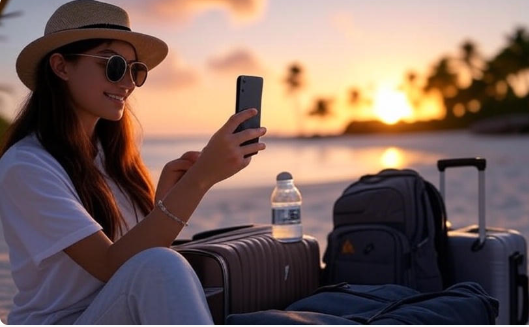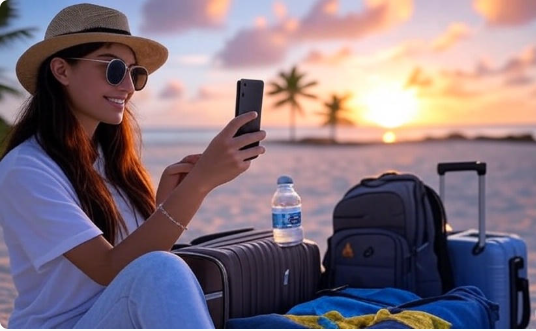The world of travel blogging has evolved drastically in recent years. As we enter 2025, sponsorships are no longer reserved for influencers with massive followings. Brands are looking for authentic voices, niche audiences, and content creators who deliver measurable value. If you’re serious about turning your travel blog into a sustainable business, mastering the art of sponsorship is essential.
This guide to “Travel Blogging: How to Get Sponsored in 2025” offers a strategic blueprint to help you navigate the current landscape with clarity and confidence.
Why Sponsorships Matter in 2025
Sponsorships offer travel bloggers more than just financial rewards. They provide credibility, visibility, and opportunities to work with tourism boards, travel brands, and service providers. With the rise of influencer marketing and content creation as a strategic marketing channel, travel bloggers are increasingly seen as valuable partners.
Sponsorships also help bloggers reach new audiences, access unique experiences, and establish long-term partnerships that support their brand and career.
Laying the Groundwork for Sponsorship Success
Define Your Niche
Having a clear niche is crucial. It not only helps your audience connect with your content, but also allows brands to see where your blog aligns with their goals. Are you a luxury travel blogger, an adventure backpacker, or a sustainable tourism advocate? Your niche should reflect your passion and expertise.
To define your niche, ask yourself:
- What destinations or types of travel do you focus on?
- Who is your ideal reader?
- What makes your blog different from others?
Build a Strong Brand Identity
Your brand identity includes your blog design, logo, writing style, photography, and overall tone. Consistency across all platforms—your blog, Instagram, YouTube, and email newsletter—helps reinforce your image and message.
Use storytelling to connect emotionally with readers. Share not just where you went, but what you experienced, learned, and overcame. Brands want to align with storytellers who can authentically influence decisions.
Create a Media Kit
Your media kit is your digital portfolio. It should be professional and easy to understand. Include:
- A brief bio and blog mission
- Website stats (monthly traffic, bounce rate, average time on page)
- Social media metrics (follower counts, engagement rates, reach)
- Demographics of your audience (age, location, interests)
- Examples of past collaborations and testimonials
- Contact information
A well-designed media kit can be a deciding factor in securing sponsorships.
Finding and Reaching Out to Sponsors
Research Potential Sponsors
Identify brands that align with your niche. Think beyond traditional travel companies to include:
- Outdoor gear brands
- Travel tech companies
- Eco-friendly products
- Wellness and fitness brands
- Fashion and beauty brands for travel
Use Instagram, blogs, YouTube, and influencer databases to see which brands are actively collaborating with bloggers.
Know What Brands Look For
Brands want to partner with bloggers who can:
- Offer access to a specific, engaged audience
- Deliver high-quality content (photos, videos, writing)
- Align with the brand’s image and values
- Provide measurable results (traffic, conversions, engagement)
Even if you have a small following, you can stand out by highlighting your engagement rate, content quality, and professionalism.
Craft the Perfect Pitch
Your pitch should be personalized and focused on value. Avoid mass emails or generic proposals.
A solid pitch email should include:
- Greeting and brief personal connection
- Introduction to who you are and what you do
- Why you’re reaching out (mention a specific campaign, product, or idea)
- What value you can offer the brand
- Call to action (e.g., schedule a call, send media kit)
Sample pitch:
Hello [Brand Name],
I’m [Your Name], the creator of [Your Blog Name], a platform that focuses on immersive cultural travel for solo female travelers. My blog reaches over 30,000 readers monthly, and I have a loyal Instagram following of 18,000 with high engagement.
I’m planning a series on sustainable travel in Southeast Asia and would love to feature [Brand Name] in my gear list and social coverage. I believe our values align, and I can deliver content that helps highlight your commitment to eco-conscious products.
I’d love to discuss how we can collaborate. I’ve attached my media kit for reference and am happy to provide further details.
Best regards, [Your Name]
Securing Your First Sponsored Trip
Start Small and Build Momentum
Most successful travel bloggers started with small or unpaid collaborations. Focus on building your portfolio, delivering results, and building strong relationships.
Start with local experiences or accommodations that align with your niche. Offer value in exchange for access or products.
Deliver Over-the-Top Results
When you do secure a deal, treat it like a professional contract:
- Stick to timelines
- Deliver high-quality content
- Provide performance reports
- Promote beyond your minimum deliverables
Exceeding expectations encourages brands to work with you again or refer you to others.
Showcase Results and Feedback
After the campaign, document what you accomplished:
- How many views or shares did the content receive?
- Did followers engage or convert?
- What feedback did the brand give?
Turn this into a case study to include in your media kit.
Maximizing Revenue: Beyond Sponsorships
Sponsorships are just one revenue stream. To build a sustainable travel blog, diversify your income sources.
Affiliate Marketing
Promote products or services and earn commissions through affiliate links. Examples include:
- Booking platforms (Booking.com, Agoda)
- Travel gear (REI, Amazon Associates)
- Insurance providers (SafetyWing, World Nomads)
Use tracking tools to monitor performance and optimize strategies.
Ad Revenue
Platforms like Mediavine and AdThrive allow bloggers with significant traffic to earn through display ads. Though it takes time to reach their minimum traffic thresholds, ad income can be reliable and passive.
Digital Products
Monetize your expertise by selling:
- Ebooks and destination guides
- Itineraries and travel planners
- Lightroom presets
- Online courses
These products add value to your audience and give you creative control over income.
Sponsored Content Packages
Bundle offerings such as:
- Blog post + Instagram story
- YouTube mention + newsletter feature
- Social takeover + review post
Brands often appreciate packaged deals that increase exposure across channels.
Long-Term Success Strategies
Build Relationships, Not Just One-Off Deals
Consistency leads to recurring income. Stay in touch with previous sponsors, update them on your growth, and pitch new ideas periodically.
Join Influencer Networks
Many platforms help match bloggers with brand campaigns:
- AspireIQ
- IZEA
- Travel Mindset
- Get Blogged
- Intellifluence
These can be especially helpful for bloggers looking to get started with sponsored content.
Network at Events
Industry events like TBEX (Travel Blog Exchange) and ITB Berlin provide chances to meet brands face-to-face, attend workshops, and form partnerships.
Stay Current on Trends
Monitor changes in:
- SEO practices
- Social media algorithms
- Content formats (short-form video, AI tools, interactive blogs)
Adapt your strategies to remain competitive.
Frequently Asked Questions
Do I need a large audience to get sponsored?
Not necessarily. Brands often work with micro-influencers who have a small but highly engaged audience. Niche relevance and trust are more important than follower count.
What platforms are best for travel blogging?
While Instagram and YouTube are popular, having a self-hosted blog gives you ownership, SEO opportunities, and more control over your content.
How often should I pitch to brands?
Aim to send a few tailored pitches per week. Focus on quality over quantity. Track responses and follow up respectfully.
How much should I charge for a sponsored post?
Rates vary based on traffic, engagement, and deliverables. Common factors include:
- Blog traffic and domain authority
- Social media reach
- Type and amount of content
- Licensing and usage rights
Start with competitive but fair pricing and increase as you gain experience.
How do I avoid scams or bad deals?
Always have a written agreement. Watch out for brands asking for free work with promises of “exposure.” Ensure terms, deliverables, and payment are clear.
Conclusion
In 2025, successful travel blogging is about more than just pretty photos and exotic locations. It’s a business built on authenticity, audience connection, and delivering real value to partners. The path to sponsorship begins with clarity—knowing your niche, building your brand, and positioning yourself as a professional content creator.
This guide on “Travel Blogging: How to Get Sponsored in 2025” has shown that you don’t need to wait for brands to come to you. By being proactive, strategic, and consistent, you can land your first sponsorship, scale your influence, and create a long-lasting career in travel content creation.
Treat your blog like a business, your audience like a community, and your sponsors like collaborators. The opportunities are real—and yours to claim.












